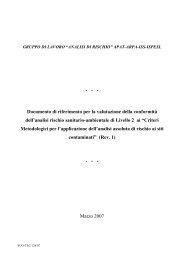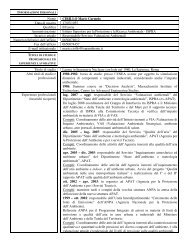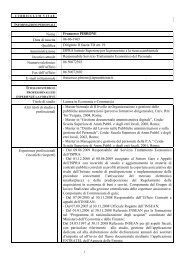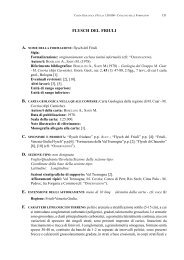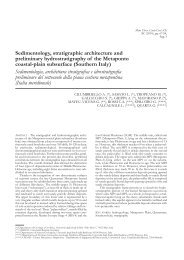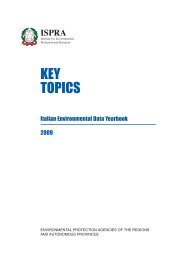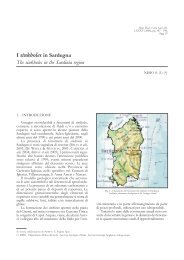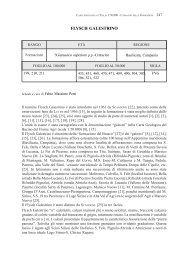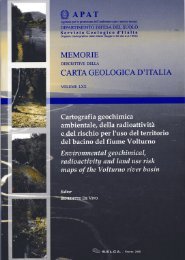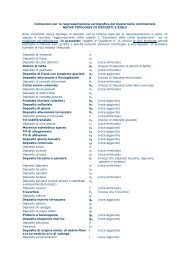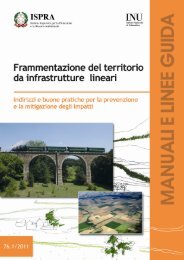Sessione 2 - Ispra
Sessione 2 - Ispra
Sessione 2 - Ispra
You also want an ePaper? Increase the reach of your titles
YUMPU automatically turns print PDFs into web optimized ePapers that Google loves.
IL CONTRIBUTO DELLA RICERCA STORICO-ARCHIVISTICA<br />
NELLO STUDIO DEI SINKHOLE DELLA PIANA DEL F. SARNO<br />
(CAMPANIA, ITALIA)<br />
di Guarino P.M. & Nisio S.<br />
ISPRA – Dipartimento Difesa del Suolo - Servizio Geologico d’Italia<br />
ABSTRACT<br />
Some landscape changes, such as catastrophic sinking, may interest short time slots,<br />
and so, may leave not easily recognizable marks on terrain, by means of usual geological<br />
research tools.<br />
For this reason, in the case of sinkhole phenomena study, the rule of historical research<br />
can be of particular importance.<br />
In the framework of researches conducted by Italian Geological Survey of ISPRA, the<br />
historical research allowed to recognize an ancient sinking phenomenon in the Sarno river<br />
plain. The sinking occurred before beginning of nineteen century and caused the formation<br />
of a little lake, named Falso Compare lake, successfully filled at the beginning of ‘900.<br />
At the same time, historical and archaeological data acquisition allowed to formulate an<br />
hypothesis about the age of another sinking cave located in the Sarno river plain, named<br />
S. Vito hollow.<br />
The presence of a church dedicated to S. Vito on the southern border of the cave, probably<br />
built on the ruins of a roman-age temple, induces to suppose that the sinking<br />
occurred during roman age, while, the presence on the floor of the hollow of a early Christian-age<br />
church dedicated to S. Apollonia, sets a limit ante quem to the hollow genesis.<br />
1. INTRODUZIONE<br />
Lo studio dei fenomeni di sprofondamento improvviso ha evidenziato, allo stesso modo<br />
dello studio di altri fenomeni geologici, una profonda evoluzione, passando da un approccio<br />
iniziale di tipo geomorfologico e geologico applicativo ad un approccio più moderno, multidisciplinare,<br />
che comprende anche la ricerca storica con consultazione di manoscritti e<br />
rappresentazioni iconografiche antiche, allo scopo di integrare il quadro delle conoscenze<br />
relative allo studio del fenomeno.<br />
Le attività condotte dal Servizio Geologico d’Italia dell’ISPRA, finalizzate alla realizzazione<br />
e aggiornamento di un database nazionale dei sinkhole (NISIO, 2008), hanno dato particolare<br />
enfasi a questo aspetto della ricerca, realizzando una linea di attività autonoma, dedicata<br />
alla ricerca storico-archivistica.<br />
Si è potuto in tal modo verificare come, nello studio dei fenomeni di sprofondamento, la<br />
ricerca storica possa talora fornire un contributo insostituibile di informazioni relative alle<br />
trasformazioni del territorio che, quando interessano intervalli di tempo molto brevi,<br />
possono non lasciare indizi geologici intelleggibili e possono risultare, quindi, non più rico-<br />
85



